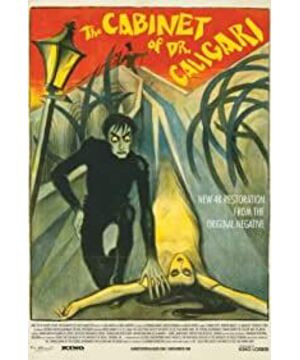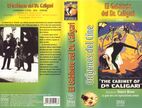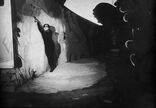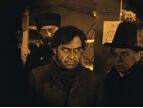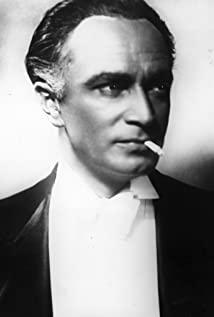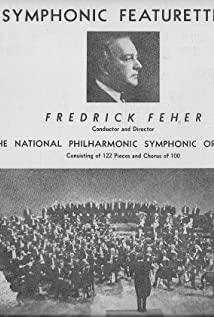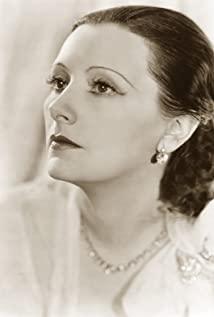The story of the movie part 11
May 20, 2018
Dr. Caligari's Cabin
Das Cabinet des Dr. Caligari (1920)
Robert Winet
When the First World War lasted more than 4 years (1914.8-1918.11) and Europe paid the heavy price of tens of millions of lives lost, it actually marked the decline of European cinema, and American cinema was accelerating its entry into the gold of commercial prosperity. period.
In 1910, the number of cinemas in the United States had exceeded 10,000, at this time the total number of cinemas in Europe was only more than 2,000. With the establishment of Hollywood and the emergence of major production companies, American cinema has become a large-scale industry in the first ten years after World War I. The production of films has not only become almost the only choice for domestic audiences, but also far away. It is sold overseas, and theaters in all countries of the world almost occupy a dominant position.
American films also have a great advantage in the European market, except for the Central European section, where the market in this region is dominated by films produced in Germany . As the largest industrial country in Europe at that time, Germany, stimulated by its defeat in World War I, relied on the gradual improvement of the film industry system (it was the largest film industry country in Europe after World War I) and the absorption of talents (the first world mentioned above) Movie stars Nielsen, Danish director Christensen, and Deleire have all gone to Berlin to make films), and mandatory policies (1916-1920 prohibit foreign film imports), in this area in a three-in-one way, tenacious Resist the invasion of Hollywood.
The most "thorough" German director to resist Hollywood is Robert Wiene, the director of "Dr. Caligari's Cabin" to be described in this article . The first batch of famous German directors in film history: Fritz Lang, Murnau, Robert Theodemeck, and Winet. In the queue, Robert Winet is the only German director who has never worked in Hollywood.
It now appears that "Dr. Caligari's Cabin" promoted him from the common commercial film directors to the list of film history.
Because in fact, saying that he chose this movie is worse than saying that the movie chose him. At that time, DECLA producer Eric Pangmao's preferred co-director in the planning stage was not Winet, but the famous Fritz Lang in the future. In the previous year, because of the strong box office response for the filming of "Spider 1: Golden Lake", Lang took advantage of the victory to shoot the sequel "Spider 2: Diamond Ship", so he refused Pang Mao's invitation to cooperate. Prior to this, Winet was a prolific commercial film director, and his directing ability has been tempered through many works. Only then did Pang Mao decide him as Lang's successor.
After Vinnet succeeded Lang, Lang's influence on the play did not disappear. He proposed to the producer Pang Mao to modify the script and was accepted by Vinnet. This suggestion is to add a prologue and an end to the story before and after it reverses the plot. This completely changes the original intent of the script and removes the political connotation that the screenwriter has injected into the film.
The original script was created by two literary and artistic youths who were in a desperate situation at that time. The Czech Hans Janowitz put his experience of being sent to a mental hospital several times when he was a wandering painter into the script because of his abnormal behavior. Another Austrian screenwriter Karl Mayer was originally a literary youth. In the transformation of survival reality, he worked as an oil merchant and has been in the market for a long time. He contributed to the script of his many experiences of watching festival performances in the market.
It is this script that mixes the special experience and emotional experience of the two, especially the article on fantasy and psychoanalysis. Sadur said in "World Film History": This is 20 years earlier than Hollywood. The script roughly talks about a psychiatric hospital director named Carrigari hypnotizing Caesar who was sent for treatment and sending him to the market to be a "prophet" foretelling the death of the person, and "sending" at night. He went to carry out the prophecy. After Caesar killed several people, he was finally exhausted and died. Dr. Caligari's trick was seen through and he was sent to a mental hospital and detained.
In fact, this story, which is somewhat crazy and has some expressionism tendencies, will serve as an excellent carrier for expressionism in the movie. Winet made a change from the beginning to the end according to the suggestions, especially the reversal added at the end: the crime committed by Dr. Caligari was nothing but the fantasy of a mental hospital patient. This small change completely emptied the crime of power/authority, and the crime instantly became the diagnosis and care of the patient. It's like covering the sharp edges and corners of the original play with several layers of sponge as a cushion, lest it hurt the audience. So when the movie ends, I look like watching a crime movie in a Chinese theater. The ending is destined to see criminals again and again, and I will eventually be brought to justice, and I feel a little discouraged.
But such a change can be affirmed by both the box office and the power. "World Film History" stated that after the film was released in Berlin, the newspaper "Advance", the newspaper of the German Social Democratic Party, expressed deep satisfaction with this "selfless compliment and tribute to the psychiatric experts." The film won the box office after the film was introduced to the United States and released in Germany. This story clearly shows that most of the time, what mainstream audiences expect from movies is care (like treating a child), not fright.
When Hollywood realizes this, they will take advantage of this expectation and use what Cousins called " closed romantic realism " on the powerful film industry assembly line to constantly copy fantasy dreams to feed and shape the audience, but Mainstream audiences almost never get tired of it, and will always eat this set.
Fortunately, it now appears that the real "author" of "Dr. Caligari's Cabin" is not the director Robert Winet, or to the extreme, not even the two screenwriters, but should belong to three film artists: Herman Worm , Walter Lehmann and Walter Lulich. Only after you have watched this film, do you understand that this is by no means an exaggeration. Their outstanding artistic contribution "overwhelming the audience" not only did not harm the quality of the film, but promoted the film to the height of a silent masterpiece.
This is the first time since the film's story writing plan, we have seen the film, a comprehensive art of division of labor and collaboration, as a part of the art, has played such a prominent and almost decisive role for the first time. It even surpassed the role of the grand and magnificent setting in "Kabylia" and "Party Facing Differences". Because if you take out the setting, the latter two films will at least contribute to the history of film and photography, and the contribution of "Ka" to the outstanding and creative art design of film history can be said to be the only one in a sense.
This is because the film is completely completed in the studio, and the environment in which the story takes place is composed of artificial props and graphic paintings. If it is said that the stage space in Meili Ai’s studio is equipped with a set of organs, it is for him to realize the purpose of turning the film into a fantasy. The three painters in "Ka" have no intention of this. They are still concerned with reality, but they are only concerned about it. It is the inner essence, a subjective reality, and the final visual effect is externalized as an abstract reality.
So far, apart from American studios making films in studios and Nordic films using natural light outdoors, the emergence of "Card" marks the film's third path. They paint shadows and light on the walls and the ground directly in the studio. This is different from the traditional studio setting and lighting. Although it is similar to the naturalistic effect, this deliberate simulation is stuck. Zeng called it: it's similar to mocking it (naturalism).
In fact, when French painter Julian August Hervey used the term "expressionism" for the first time in 1901 in order to distinguish his paintings from impressionism, the popular wave of expressionism had to go through nearly ten years. It was re-brewed and fermented from Munich in the year that it swept away. Since its birth, it has been so "clear-cut" against naturalism and impressionism.
When the hand of the time was set in 1920, when "Dr. Caligari’s Cabin" was born , expressionism had already invaded people’s daily lives . Sadur had already noticed that "expressionism had invaded the streets of Berlin when describing post-war Germany." Above, advertising paintings, the decoration of theaters and cafes, shop signs and window decorations are all cast with expressionism." Therefore, when the three expressionist painters use expressionism to "aggress" and "occupy" films, it is already a matter of course.
Herman Worm, the leading brother of the three painters, even promulgated the basic guidelines for the aesthetic creation of "Ka" by using "movie should be a living picture". When the film absorbed expressionism, we did see an unprecedented movie world in "Dr. Caligari's Cabin". Strongly distorted and deformed objects, abrupt building spires, dense paper-cut houses, exaggerated lines, slanted doors and windows, a geometric world drawn to the extreme. A perverted world that gives people a strong sense of incongruity.
So in a movie with a high level of art, everything else becomes the "followers" of art. The costumes should naturally match the bizarre scenes, and the makeup should highlight the paleness of the characters’ faces and the hollow eyes, and the thick and weak hairstyles for Caesar (the characters in "Edward Scissorhands") The modelling refers to this film), the actors’ performances must be pretended to be postures. In order to maintain the painter’s “deliberate” set structure, the camera most of the time reverts to motionless, subject to the state of the stage play. When you realize all this about how the movie is connected, you should agree with me that art is the baton of this movie .
The outstanding creations of three painters made "Dr. Caligari's Cabin" a great success. The director Robert Winet asked Meyer, one of the screenwriters of the film, to write a new script for "Guinuin". , But suffered a huge failure, I am afraid it has nothing to do with him changing the art. Winet never took the risk anymore, retracting "Card" to make a commercial film that caters to the audience, and got on and off the train of movie history that went on. The three artists joined the crew of Fritz Lang's "Three Livelihoods" screened later in the evening, and helped Fritz Lang complete his first masterpiece in his great film career with further upgraded and strengthened art settings.
However, the great success of "Ka" and "Three Livelihoods" brought a strong follow suit. All German films returned to studio production for a time. The director no longer "believes" in the location, they are like Meili obsessed with obsession. Just like his studio in Montreuil, they completed all their film productions in a large-scale studio in Berlin.
But I believe in outdoor scenes and the fascinating contingency that may be contained in the outdoor realistic scenes , so we are going to the Arctic Circle, which is shrouded in abundant natural light for half a year every year, and watch "Nanuk of the North".
Section 3 World Expansion of Film Style (1918-1928)
1Dr. Caligari's cabin Das Cabinet des Dr. Caligari (1920), Robert Winet
2 Nanook of the North (1922), Robert Flahadi
3 The Kid (1921), Charlie Chaplin
4Safety Last! (1923), Fred C. Newmayer/Sam Taylor
5 Holmes II Sherlock Jr. (1924), Buster Keaton
6 The White Rose of the Railway La Roue (1923), Abel Gance
7 Greed (1924), Eric von Strohheim
8 Battleship Potemkin Броненосец Потёмкин (1925), Sergey Eisenstein
9 Metropolis (1927), Fritz Lang
10 Sunrise (1927), F·W·Munau
11 The Crowd (1928), Kim Widow
12 The Story of Joan of Arc, La passion de Jeanne d'Arc (1928), Carl Dreyer
13 Armory Арсенал (1929), Alexander Dufrenko
Image View of Dong Feiyu · WeChat ID: hickokjeans
View more about The Cabinet of Dr. Caligari reviews


